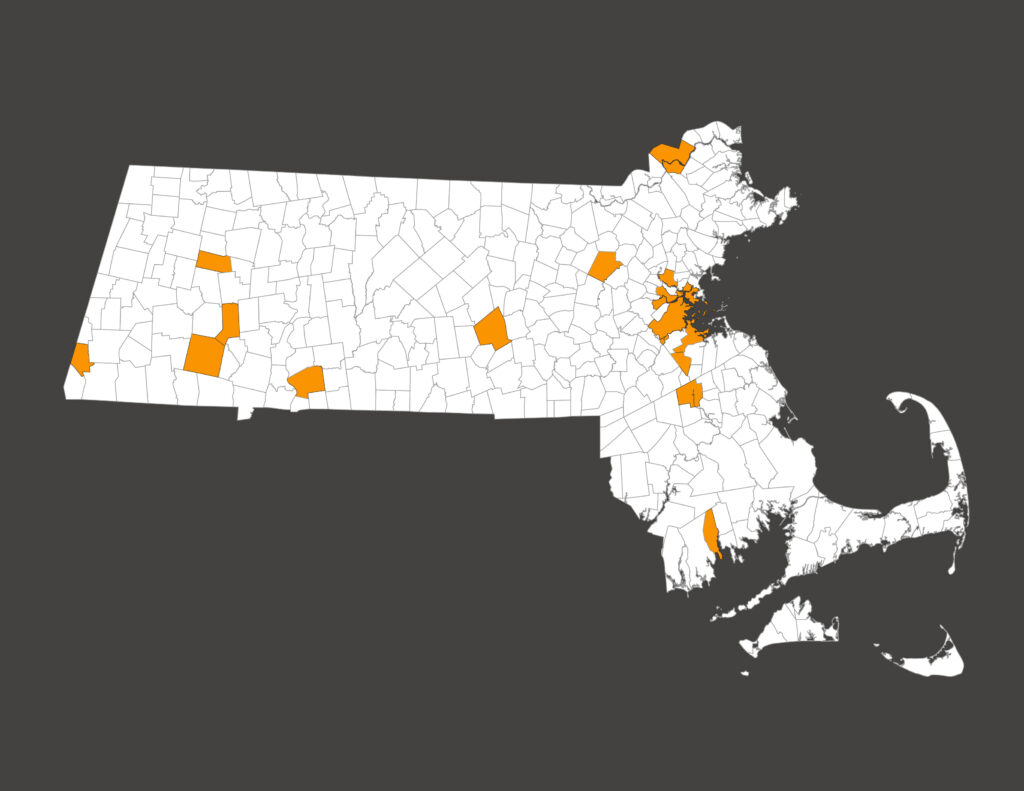WalkBoston Comments on Memorial Drive Phase III – 25% Design
July 21, 2022
Commissioner Doug Rice
Department of Conservation and Recreation
251 Causeway Street
Boston, MA 02114
Attn: Jeff Parenti, Deputy Chief Engineer; Dan Driscoll, Director of Green Transportation
RE: Memorial Drive Phase III – 25% Design
Dear Commissioner Rice:
WalkBoston is Massachusetts’ primary pedestrian advocacy organization, working across the Commonwealth to make it safer and easier for people to walk for all activities of daily living such as access to transit, school and jobs. We are writing with comments about the 25% design for the 0.8-mile section of Memorial Drive from Eliot Bridge east to the intersection of Memorial Drive and John F. Kennedy Street near Harvard Square. We are happy to see this project continuing to move forward.
We are very pleased that DCR is committed to implementing a road diet for this portion of Memorial Drive and to several key elements of the project including:
- Paying close attention to providing a walking path that is separated from the paved shared use path. Converting the existing 6.5-foot-wide path to a 10-foot shared use path paired with a 5-foot wide stabilized gravel path for people walking and running will help reduce conflicts.
- Adding mid-block crossings in two locations (although further attention is needed to make these crossings safe under the current roadway design, such as adding speed tables and mini bump-outs).
- Taking special care of the Plane trees and carefully designing refurbished planting and landscaping of the Reservation.
Our comments and concerns are centered on the design speed that underlies the specific roadway design and thus will not yield the very significant safety benefits that slower speeds would make possible. There is definitive evidence that in order to slow traffic, roads must be designed with that purpose. We strongly urge DCR to work internally and with the City of Cambridge to revise the design speed of 35 mph and to reduce that speed to 25 mph. The nearby and heavily traveled Alewife Brook Parkway is posted for 25 mph, as are many other DCR parkways.
DCR should be designing a road for what is needed, and not repeating roadway designs of the past that allow people to drive fast, especially at off peak times. MassDOT Safe Speeds Guidance specifically addresses this issue, and certainly DCR as a parks and recreation agency, should be leading the way for slower speeds and safer conditions for people walking and biking.
Memorial Drive should be posted and designed for 25 mph.
The slower design speed would reflect the roadway’s setting within a park, would match the speed limit of Cambridge, and would significantly enhance the safety of the tens of thousands of pedestrians and bicyclists who are drawn to the Reservation and its pathways. In addition to the direct safety benefits of a reduced design speed (and thus reduced actual driving speed) additional benefits of a lower design speed include:
Allowing the reduction of the pavement width from 26’ – comprising two ten-foot lanes and two three-foot shoulders. Narrowing the shoulders to 12-18” would provide a number of important benefits:
- Adding more park space and creating more distance between the roadway and the allee of Plane trees
- Reducing impervious surface and runoff from the roadway, which would improve the health of the Reservations’s trees and other plants
- Shortening crossing distances for pedestrians, thus possibly limiting the need for substantial traffic calming at the mid-block crossings
We also request that DCR remove the right turn slip lane to Hawthorn Street that seems unnecessary from an operating standpoint, would increase the speed of right-turning vehicles and this section of roadway adds unnecessary paving within the Reservation.
Thank you for the opportunity to comment on the 25% design, and we look forward to continuing to work with you on this important and exciting project.
Stacey Beuttell, AICP
Executive Director, WalkBoston
